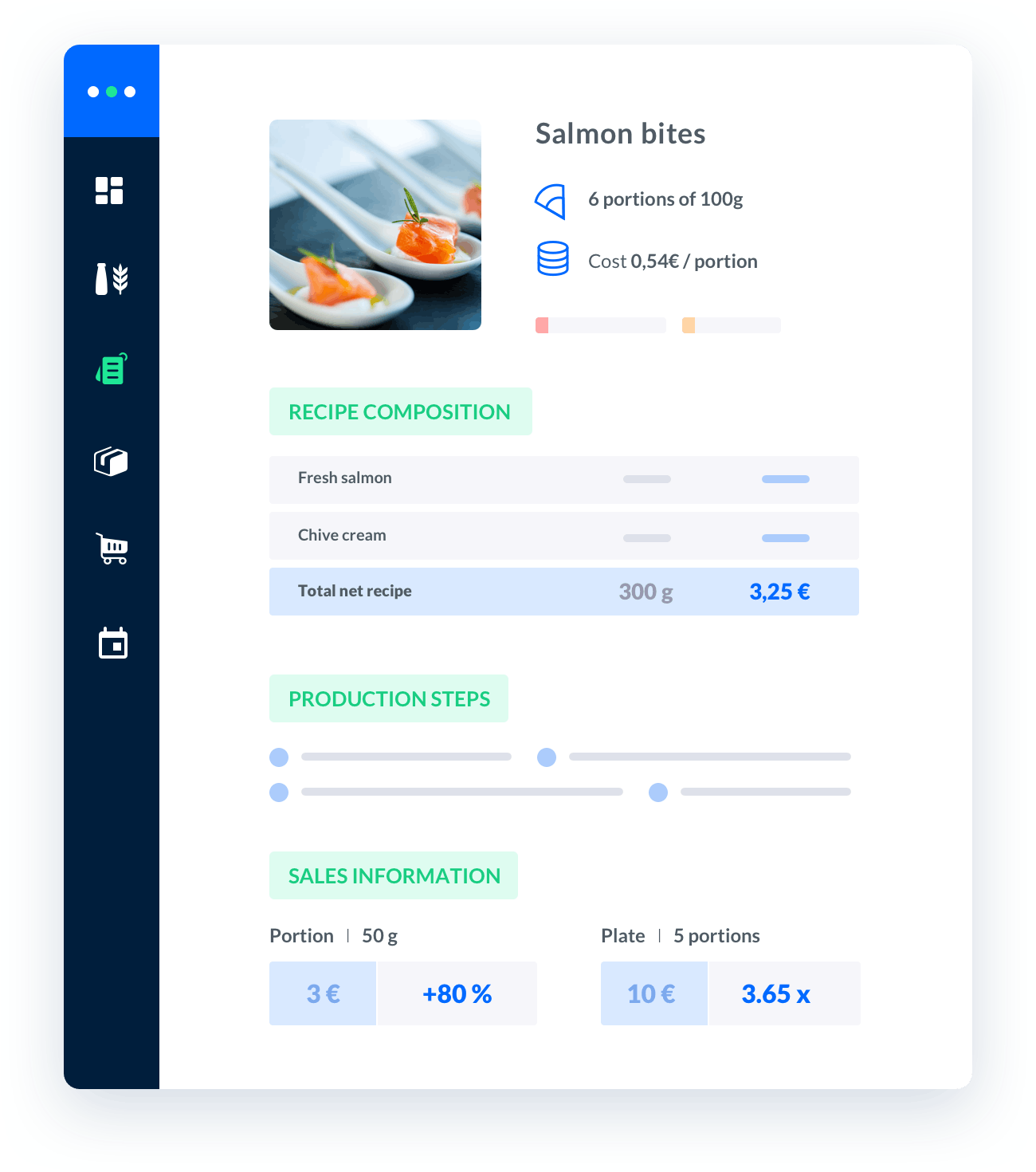food cost analysis
Food Cost Analysis: Maximizing Profitability in the Catering IndustryIn the highly competitive catering industry, understanding and managing food costs is crucial for maintaining profitability and sustainability.A comprehensive food cost analysis enables catering professionals to make informed decisions, optimize pricing strategies, and identify areas for cost reduction.

Melba: the food cost app to optimize the profitability of your restaurant
Discover how to optimize the profitability of your restaurant with melba

The ultimate guide to food cost restaurant
Learn more about the food cost basis and how to reduce your food cost percentage
Food Cost Analysis: Maximizing Profitability in the Catering Industry
In the highly competitive catering industry, understanding and managing food costs is crucial for maintaining profitability and sustainability. A comprehensive food cost analysis enables catering professionals to make informed decisions, optimize pricing strategies, and identify areas for cost reduction. In this article, we will delve into the key aspects of food cost analysis, providing valuable insights and actionable tips to help you effectively manage your catering business.
The Importance of Food Cost Analysis
Food cost analysis is a vital component of financial management in the catering industry. By closely monitoring and evaluating your food costs, you gain a clear understanding of the factors affecting your bottom line. Here are some reasons why food cost analysis is essential:
- Identifying Profitability: Analyzing food costs helps you determine the profitability of your menu items and identify high-margin dishes.
- Pricing Optimization: By understanding your food costs, you can set appropriate prices that cover expenses and generate optimal profit margins.
- Menu Engineering: A thorough analysis allows you to identify popular, high-profit dishes, and optimize your menu accordingly.
- Cost Reduction: Identifying areas of high food costs enables you to implement cost-saving measures, improving overall profitability.
- Inventory Management: Analyzing food costs helps in efficient inventory management, minimizing waste and spoilage.
Calculating Food Costs
Accurate calculation of food costs is the foundation of effective food cost analysis. Here's a step-by-step guide to help you calculate food costs:
- Start with Inventory Value: Determine the total value of your inventory, including all food and beverage items in stock.
- Record Purchases: Keep track of all purchases during a specific period, including quantities and costs.
- Calculate Usage: Measure the amount of ingredients used in preparing each menu item.
- Apply Unit Costs: Assign appropriate costs to each ingredient based on the purchase price.
- Calculate Total Food Cost: Sum up the costs of all ingredients used to prepare the menu items.
- Calculate Food Cost Percentage: Divide the total food cost by the total sales to determine the food cost percentage.
Effective Strategies for Food Cost Management
Now that you understand the significance of food cost analysis let's explore some effective strategies for managing food costs in the catering industry:
1. Menu Engineering
Menu engineering involves analyzing your menu items to identify the most profitable dishes and strategically positioning them. Here's how you can implement menu engineering:
- Identify High-Profit Items: Analyze the profitability of each menu item by calculating their individual food cost percentages.
- Highlight High-Margin Dishes: Promote and position high-profit items prominently on your menu to encourage customer selection.
- Optimize Ingredient Usage: Modify recipes to reduce ingredient costs without compromising taste or quality.
- Regular Menu Evaluation: Continuously evaluate your menu's performance and make necessary adjustments based on sales and customer preferences.
2. Inventory Management
Efficient inventory management is crucial for minimizing food wastage and optimizing costs. Consider the following practices:
- Regular Stocktaking: Conduct frequent inventory checks to monitor stock levels and identify discrepancies.
- First-In, First-Out (FIFO): Implement the FIFO method to ensure older inventory is used first, reducing the risk of spoilage.
- Supplier Evaluation: Regularly assess your suppliers to ensure you are obtaining the best quality ingredients at competitive prices.
- Portion Control: Train your staff to follow portion control guidelines to minimize food waste and maintain consistency.
3. Cost-Saving Measures
Implementing cost-saving measures can significantly impact your bottom line. Here are some effective strategies:
- Seasonal Ingredient Sourcing: Utilize seasonal ingredients as they are often more affordable and fresher.
- Smart Menu Planning: Optimize your menu by incorporating versatile ingredients that can be used across multiple dishes.
- Negotiating with Suppliers: Develop good relationships with suppliers and negotiate better pricing terms.
- Minimize Overproduction: Analyze demand patterns and adjust production quantities to avoid excessive waste.
In conclusion, conducting a food cost analysis is crucial for catering professionals to maximize profitability and sustain their businesses. By carefully analyzing food costs, implementing effective strategies, and continuously monitoring performance, you can achieve optimal financial management and success in the competitive catering industry.






